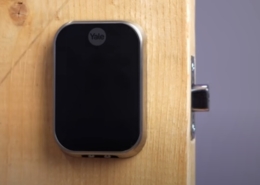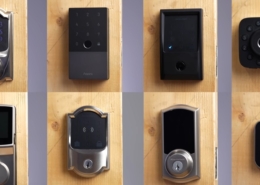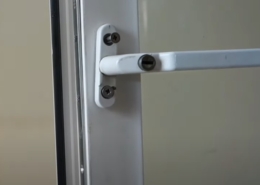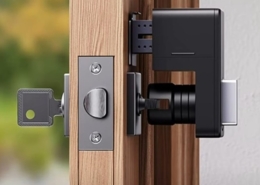Are Smart Locks Safe? Breaking Down Security in Digital Locking Systems
Explore the balance of convenience and security in smart locks, their vulnerabilities, and how to enhance safety in our digital world.
Smart locks represent the intersection of security and technology, offering convenient access control and integration with smart home systems. As digital locking systems become increasingly popular, questions about their safety and reliability emerge.
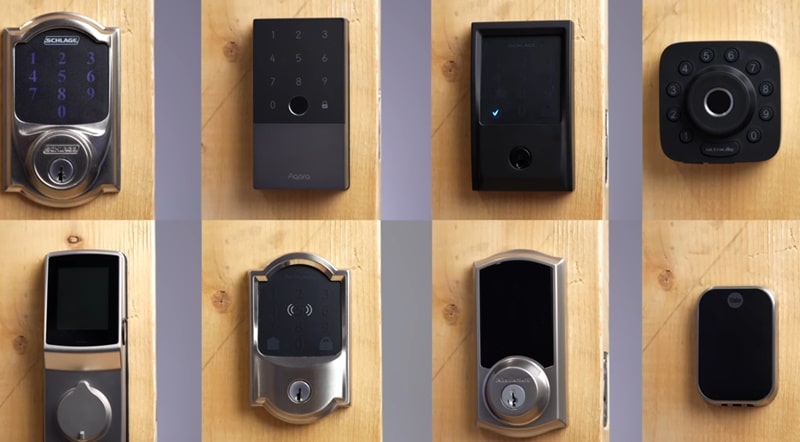
This article delves into the security landscape of smart locks, practical measures for enhancing their safety, and the challenges and features that come with these sophisticated devices. We also explore the importance of consumer and business education in ensuring secure and effective smart lock usage.
Security Landscape of Smart Locks
Technological Vulnerabilities: A Shadow Over Smart Lock Reliability
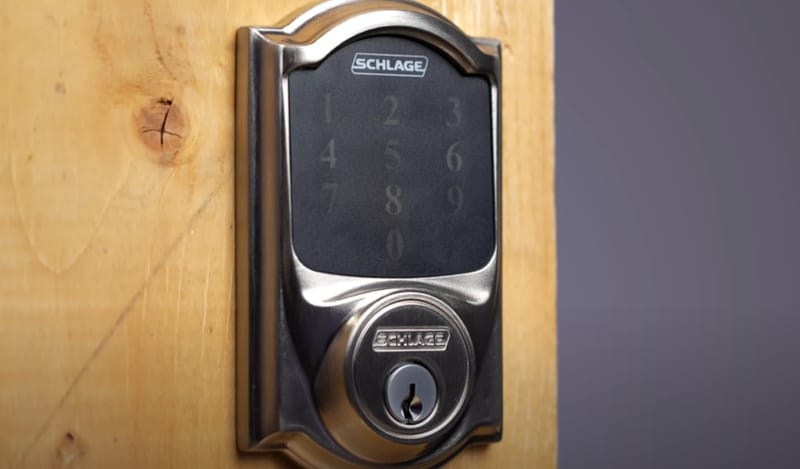
Smart locks, as part of the expanding universe of smart home devices, are not immune to the technological vulnerabilities that plague connected devices.
The risk of hacking or unauthorized access remains a significant concern, with high-profile security breaches in various technology sectors making consumers wary of internet-connected security solutions. Smart locks, despite advancements in cybersecurity protocols and encryption, are still subject to these risks.
While smart locks offer convenience and innovative features, the shadow of technological vulnerabilities looms, challenging the perception of their reliability.
The following points outline some of the main issues and considerations for smart lock technology:
- Technical Compatibility and Reliability: Not all smart locks integrate seamlessly with every door or home automation system, leading to potential frustration.
- Dependence on Power and Connectivity: Reliance on batteries, wired power supplies, and Wi-Fi or Bluetooth connections can cause operational hiccups.
- Cost Barriers: The initial investment and ongoing maintenance for smart locks can deter some consumers.
Addressing these concerns requires manufacturers to focus on broader compatibility, power optimization, and enhanced fail-safes to ensure consistent operation.
The Balance of Convenience and Security
Smart locks represent a significant shift from traditional key-based systems, offering a blend of security and convenience that appeals to the modern homeowner. The allure of controlling access to one’s home remotely and integrating with other smart home devices positions smart locks as a forward-thinking choice for residential security.
However, this convenience does not come without its trade-offs. The potential for technological vulnerabilities is a concern that cannot be overlooked.
Smart locks, like all connected devices, are susceptible to the same spectrum of cyber threats that plague other internet-enabled technologies. Users must weigh the convenience of remote access and integration with the risk of potential security breaches.
The right fit for home security may ultimately hinge on individual living priorities. For some, the automation and centralized control offered by smart locks will outweigh the concerns of digital security risks.
While the market continues to evolve with improvements in cybersecurity and encryption, users must remain vigilant and informed about the strengths and weaknesses of their digital locking systems.
Evaluating the Strengths and Weaknesses of Digital Locking Systems
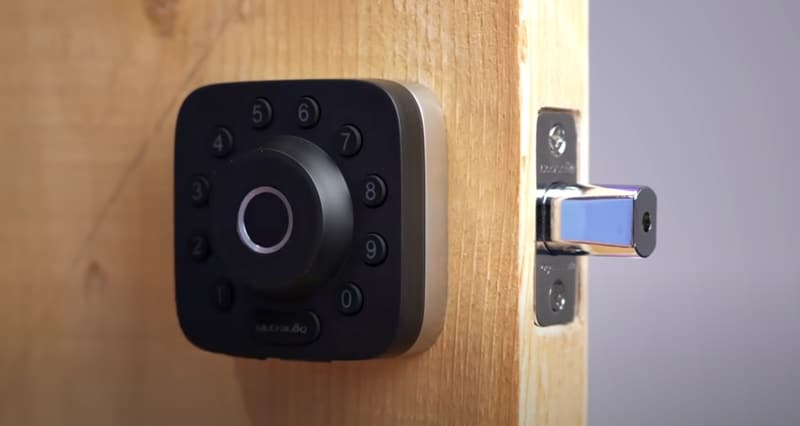
When considering the adoption of smart locks, it’s crucial to weigh their advantages against potential drawbacks. Smart locks offer unparalleled convenience, allowing users to unlock doors remotely, manage access permissions, and receive entry logs in real time. However, this convenience may come at the cost of increased technological vulnerabilities.
The strengths of smart locks are often highlighted by their integration with other security devices, such as cameras, enhancing monitoring and operational efficiency. Yet, users must be aware of the main issues that can arise, including power and connectivity dependencies, door misalignment, and the potential for jamming.
Smart locks require a balance between advanced features and user-friendly operation to ensure security without overwhelming the user.
Cost is another factor, as smart locks can present financial barriers for some consumers. Assessing the initial purchase price and the long-term costs associated with maintenance and potential accessory needs is important. Here’s a brief overview of key considerations:
- Convenience: Remote access, user management, real-time alerts
- Security: Integration with cameras and alarms, access logs
- Reliability: Battery life, power supply, Wi-Fi connectivity
- Usability: Ease of installation, user interface, manual override options
- Cost: Initial investment, ongoing maintenance, additional accessories
Security Measures for Smart Lock Owners
Best Practices for Password Management and Device Settings
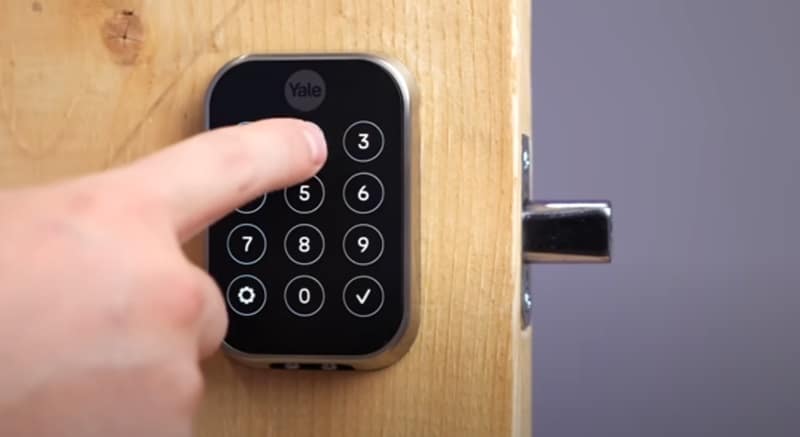
Ensuring the security of smart locks begins with robust password management and device settings. Always change default passwords to something unique and complex, incorporating a mix of characters. Avoid using easily guessable information, such as personal names or dates.
Here are some best practices to enhance your smart lock’s security:
- Change default passwords immediately
- Use a password manager to keep track of unique passwords
- Regularly update your smart lock’s firmware
- Enable two-factor authentication if available
- Avoid using public Wi-Fi to manage your smart lock settings
Remember, the strength of your smart lock is significantly influenced by the security of your passwords and the diligence of your device management.
Additionally, consider the connectivity of your smart lock. PIN codes are recommended for their reliability and ease of use across different nationalities, as they can function offline and ensure access even when technical issues occur.
The Importance of Regular Maintenance and Updates
Regular maintenance and timely updates are crucial for the longevity and reliability of smart locks. Ensuring your smart lock’s firmware is up-to-date is as important as physical maintenance. Updates often contain security patches and enhancements that protect against new vulnerabilities.
- Functionality: Regular checks can prevent issues such as a door becoming misaligned or the lock jamming, which is common due to seasonal temperature changes.
- Battery Life: Keep an eye on battery levels to avoid unexpected lockouts. Replace batteries as needed to maintain optimal performance.
- Connectivity: Address potential Wi-Fi disruptions with backup options like Bluetooth or a physical key.
Proactive care not only extends the life of your smart lock but also ensures it operates at peak efficiency, providing you with seamless access and security.
It’s advisable to perform a check-up on your smart lock’s alignment and functionality periodically, perhaps every six months to a year. This can be done independently or with the assistance of a locksmith. Doing so can avoid frustrating malfunctions and ensure your smart lock serves you well for years.
Integrating Smart Locks with Overall Home Security Systems
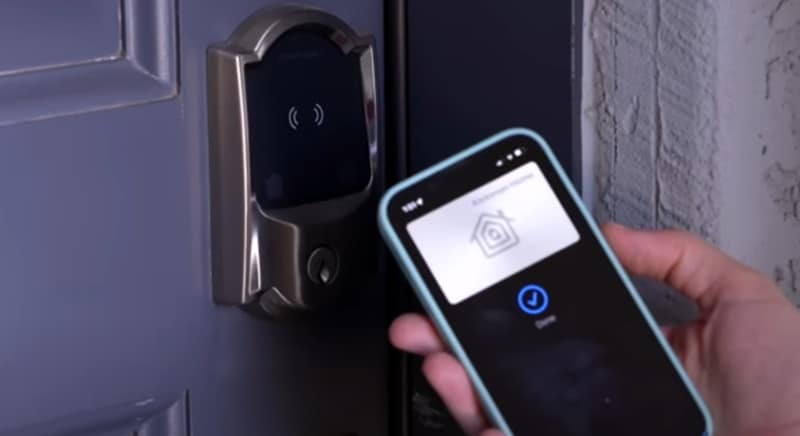
Integrating smart locks into your home security system is not just about upgrading to the latest technology; it’s about creating a cohesive and responsive security environment. Smart locks offer the convenience of remote management and the added security of real-time alerts and access control.
When considering integration, compatibility is key. Ensure that your smart lock can communicate effectively with your existing security setup. Here’s a simple checklist to guide you through the integration process:
- Verify compatibility with your home automation platform (e.g., Amazon Alexa, Google Assistant, Apple HomeKit).
- Assess the smart lock’s security features and how they complement your current system.
- Plan for a seamless setup process, ensuring all components harmonize harmoniously.
By thoughtfully integrating smart locks with your overall home security system, you can achieve a higher level of security while maintaining the convenience that modern technology offers.
Remember, the goal is to enhance your home’s security without introducing unnecessary complexity. A well-integrated system should be user-friendly and reliable, providing peace of mind and a fortified line of defense against potential intruders.
Challenges of Smart Lock Technology
Dealing with Power and Connectivity Dependencies
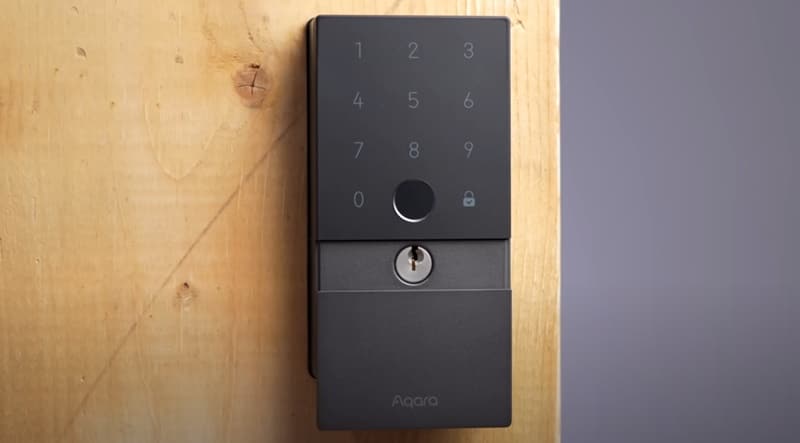
Smart locks have revolutionized home security by integrating cutting-edge technology with everyday convenience. However, reliance on power sources and stable connectivity is a critical aspect that users must navigate.
Most smart locks operate on batteries or a wired power supply, with the former posing a risk of unexpected lockouts if not monitored and replaced timely. Connectivity issues like Wi-Fi disruptions can also prevent access, leaving users locked out.
Manufacturers are developing power optimization techniques and backup options to mitigate these risks. For instance, the emergence of networks like Matter aims to combine Wi-Fi connectivity with Bluetooth’s lower power consumption, offering a more reliable solution.
Property managers and consumers alike must weigh their options, considering the unique features of each device and the evolving range of connectivity options, from Bluetooth to cellular connections.
It is essential for smart lock owners to understand the implications of power and connectivity on their devices and to take proactive measures to ensure uninterrupted access and security.
Here are some steps to consider for maintaining your smart lock’s functionality:
- Regularly check and replace batteries before they run out.
- Ensure a stable internet connection and have a backup method for unlocking.
- Stay informed about updates and new technologies that can enhance the reliability of your smart lock.
Addressing Physical Issues: Misalignment and Jamming
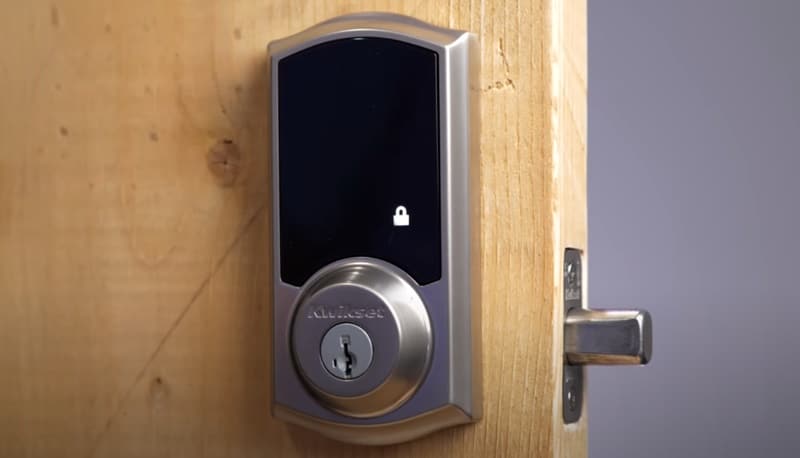
Smart locks, like any technological device, are not immune to physical challenges. Door misalignment and jamming are common issues preventing a smart lock from functioning correctly. These problems are often due to natural factors such as changing temperatures and seasons, which can cause doors and frames to warp or shift.
To mitigate these issues, it is recommended to perform regular check-ups on the door’s alignment, potentially every six months or annually. This can be done independently or with the assistance of a locksmith.
Proactive maintenance is key to ensuring the longevity and reliability of your smart lock system.
Simple troubleshooting steps can be taken in case of a jammed or misaligned door. For instance, pushing or pulling the door to realign it with the frame while entering the access code can sometimes resolve the issue. Additionally, jiggling the door while entering the code may also help. However, if these quick fixes do not work, it may be necessary to seek professional help to avoid damaging the lock or door.
Overcoming Cost Barriers for Consumers
Smart locks represent a significant advancement in home security, but the associated costs often hinder their adoption. For many, the initial investment is a major obstacle, particularly when considering the replacement of traditional locks in multiple doors. To address this, some strategies can be employed:
- Comparing different brands and models to find the most cost-effective option.
- Looking for discounts, rebates, or bundle deals to lower the overall expense.
- Considering the long-term savings in potential theft prevention and insurance discounts.
While the upfront cost is higher than traditional locks, the long-term benefits and potential savings should be factored into the consumer’s decision-making process.
Manufacturers are beginning to recognize the need for more affordable smart lock solutions. They can facilitate wider adoption by offering various products that cater to various budgets. Additionally, incremental upgrades or modular systems allow consumers to invest in smart lock technology at a pace that suits their financial situation.
Enhancing Home Security with Smart Lock Features
Key Security Features to Consider When Choosing a Smart Lock
When selecting a smart lock, the paramount concern is the security it affords your home. Look for features such as encrypted Bluetooth connections, automatic locking, and two-factor authentication to ensure robust protection against unauthorized access. The physical durability of the lock is equally important, as it must resist forced entry attempts.
Ease of use is another critical factor. A smart lock should integrate seamlessly with your existing smart home ecosystem and offer a user-friendly app interface. Using a traditional key as a backup is a practical consideration, especially in power or connectivity issues.
It’s essential to evaluate the lock’s compatibility with your door, the battery life, adherence to security standards, and the availability of customer support. A comprehensive warranty can provide additional peace of mind.
Finally, assess the lock’s ability to grant temporary access to guests and its operational efficiency. The ideal choice is a smart lock that simplifies your daily routine without compromising security.
The Role of Smart Locks in Monitoring and Operational Efficiency
Smart locks are not just about keyless entry; they are pivotal in enhancing operational efficiency and monitoring capabilities within various settings. Businesses have come to understand the importance of smart locks in optimizing access management and security.
For instance, these locks facilitate remote access control in commercial spaces, allowing for more flexible and efficient employee and visitor entry management.
- Remote access control for employees and visitors
- Optimization of space utilization
- Tracking entry and exit points
- Monitoring deliveries
These features are particularly beneficial in shared workspaces or buildings with sensitive assets, where maintaining security is paramount. Smart locks provide detailed usage logs and the ability to monitor access in real time, which can be crucial for incident investigation and operational analysis.
Enhanced security features and the ability to pull logs from devices at any point make smart locks a valuable component of commercial security infrastructure.
Integrating smart locks with other security devices, such as cameras, creates a more robust monitoring system. This combination not only improves security but also serves as a deterrent, signaling to potential criminals that the premises are well-protected.
Combining Smart Locks with Other Security Devices for Maximum Protection
To achieve the highest level of security, smart locks should not be used in isolation. Instead, they are most effective when integrated into a broader smart home ecosystem. This approach not only enhances security but also improves operational efficiency and convenience.
- Smart locks allow you to lock and unlock your doors remotely and can even be set to lock and unlock based on certain triggers automatically.
- Security cameras: Pairing smart locks with security cameras can visually verify who is accessing your property.
- Alarm systems: Adding an alarm system can alert homeowners to unauthorized entry attempts, complementing the smart lock’s capabilities.
By creating a network of interconnected devices, homeowners can monitor and control various aspects of their home security from a single interface. This not only deters potential intruders but also provides a comprehensive log of security-related events, which is invaluable in the event of a security breach.
It’s essential to select smart locks compatible with other devices in your home to ensure seamless operation. Manufacturers often provide detailed specifications and compatibility information to assist in making an informed decision.
Conclusion: Balancing Convenience and Caution with Smart Locks
In conclusion, smart locks represent a significant advancement in home security, offering both convenience and enhanced monitoring capabilities. While they are generally secure, the potential for technological vulnerabilities cannot be ignored. Users must diligently select smart locks with robust security features, such as encrypted connections and two-factor authentication, and practice good security habits like setting strong, unique passwords.
Additionally, addressing issues like power dependence and educating consumers on smart lock management are crucial for maximizing the benefits of these devices. When paired with other security measures like cameras, smart locks can defend against unauthorized access, making them a valuable addition to modern home security systems.
Frequently Asked Questions
How secure are smart locks compared to traditional locks?
Unlike traditional ones, smart locks are generally considered secure and offer monitoring capabilities. While breaking a window might be easier than picking a lock, smart locks add a layer of security by allowing homeowners to track access and receive alerts.
What are the technological vulnerabilities of smart locks?
Smart locks, like any connected devices, are susceptible to hacking and unauthorized access. Despite advancements in encryption and security protocols, cybersecurity concerns remain significant for users considering smart locks.
What should I consider when choosing a smart lock for my home?
When selecting a smart lock, consider features such as encrypted Bluetooth connections, automatic locking, and two-factor authentication. Also, assess the physical durability of the lock and ensure it meets your specific security needs and preferences.
How can I minimize the risk of my smart lock being hacked?
To minimize hacking risks, always change default passwords, use strong, unique passwords, and avoid using personal information. Regularly update the lock’s firmware and consider additional security measures like two-factor authentication.
What are the main issues with smart locks, and how can I overcome them?
Common issues include door misalignment, jamming, power dependency, and connectivity disruptions. Overcome these by ensuring proper installation, regular maintenance, using locks with power optimization and backup options, and having a stable internet connection.
How do smart locks enhance operational efficiency and home security?
Smart locks improve operational efficiency by providing access logs and integrating security systems like cameras. This combination of monitoring and control features can deter potential intruders and streamline home access management.


